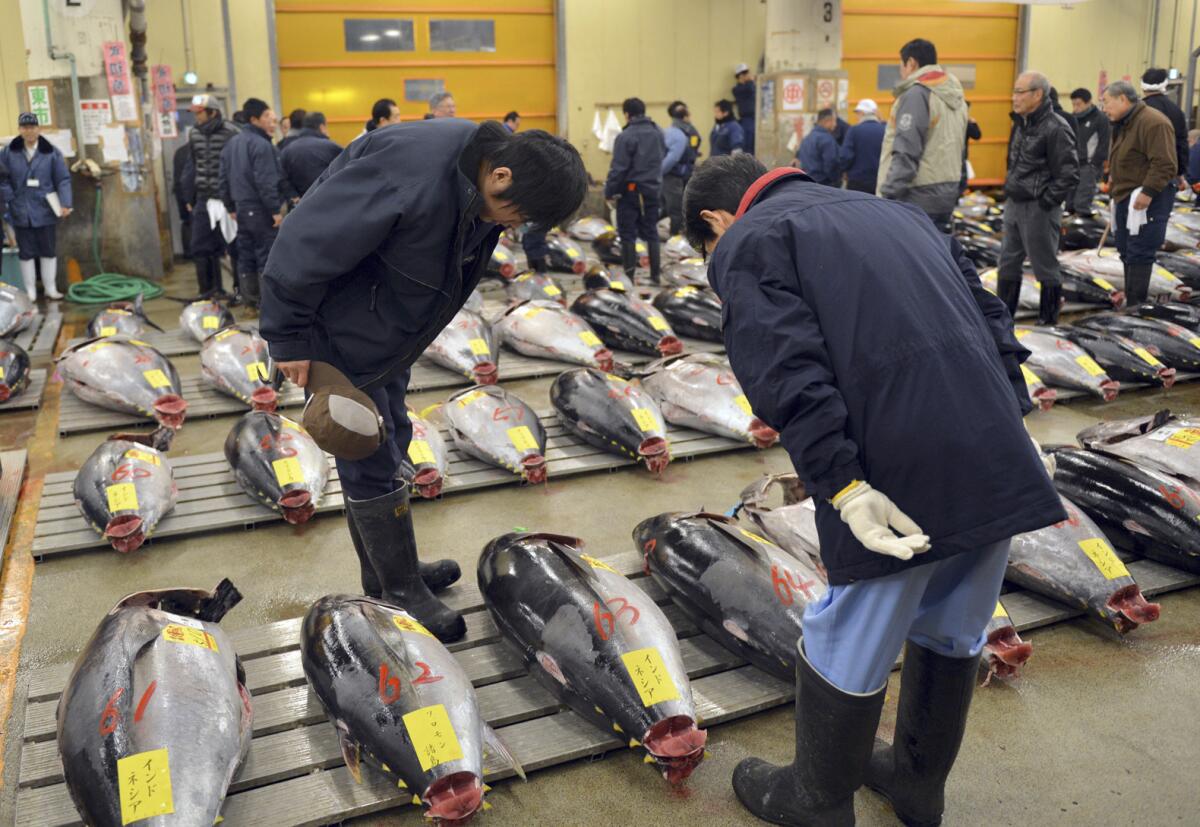Pacific Rim nations agree to halve take of dwindling bluefin tuna

Japan, South Korea and the United States agreed Thursday on new annual limits on the catch of dwindling young bluefin tuna in an effort to double the population within a decade.
The conservation plan announced by the Western and Central Pacific Fisheries Commission after a meeting in the western Japanese city of Fukuoka aims to boost the depleted stock by counting the accidental catch of young bluefin tuna by long-net trawling as part of the regulated take.
The agreement to cut the harvest next year and beyond to half of the authorized level a decade ago, to 4,007 tons, will primarily affect Japan, where demand is high for the young tuna, a prized ingredient in sushi. Japan consumes about 80% of the world’s bluefin tuna catch and an even larger share of the take from the Pacific region.
The nation’s catch of juvenile bluefin tuna in 2012 came to 3,815 tons, the Japan Times reported last week, based on figures from Japan’s Fisheries Ministry.
Conservationists with the Pew Charitable Trusts, which is leading the international effort to protect the juvenile bluefin stock, hailed the commission decision and a related amendment of regulations of the U.S. National Oceanic and Atmospheric Administration as overdue protection of the young tuna, defined as those weighing less than 66 pounds.
Bluefin tuna are “as fast as racehorses,” grow to the size of a small car, can dive deeper than 4,000 feet and live to be 40, Pew said in a report on the NOAA action. The amendments adopted last month restrict the use of long-line nets in the Gulf of Mexico and off North Carolina’s Cape Hatteras, where the Atlantic species spawn.
An international scientific committee on tuna stocks estimates that only about 4% remains of the original Pacific population of young bluefin tuna and that the species has lost two-thirds of its numbers in the last 40 years.
“NOAA Fisheries deserves great praise for significantly increasing protections for bluefin while allowing fishing for yellowfin tuna and swordfish to continue,” said Lee Crockett, director of U.S. ocean conservation for the Pew Charitable Trusts.
Fishermen have been prohibited from intentionally harvesting young bluefin tuna since 1982 but surface long lines, which can stretch 30 miles wide in commercial fishing attempts to catch less threatened fish, ensnare hundreds of thousands of pounds of bluefin tuna each year, Pew said.
In 2012 alone, 445,338 pounds of dead Atlantic bluefin tuna had to be destroyed, the charity said, after the fish died in the nets dragged along the ocean’s surface for as long as 18 hours.
Follow @cjwilliamslat for the latest international news 24/7
More to Read
Start your day right
Sign up for Essential California for news, features and recommendations from the L.A. Times and beyond in your inbox six days a week.
You may occasionally receive promotional content from the Los Angeles Times.







